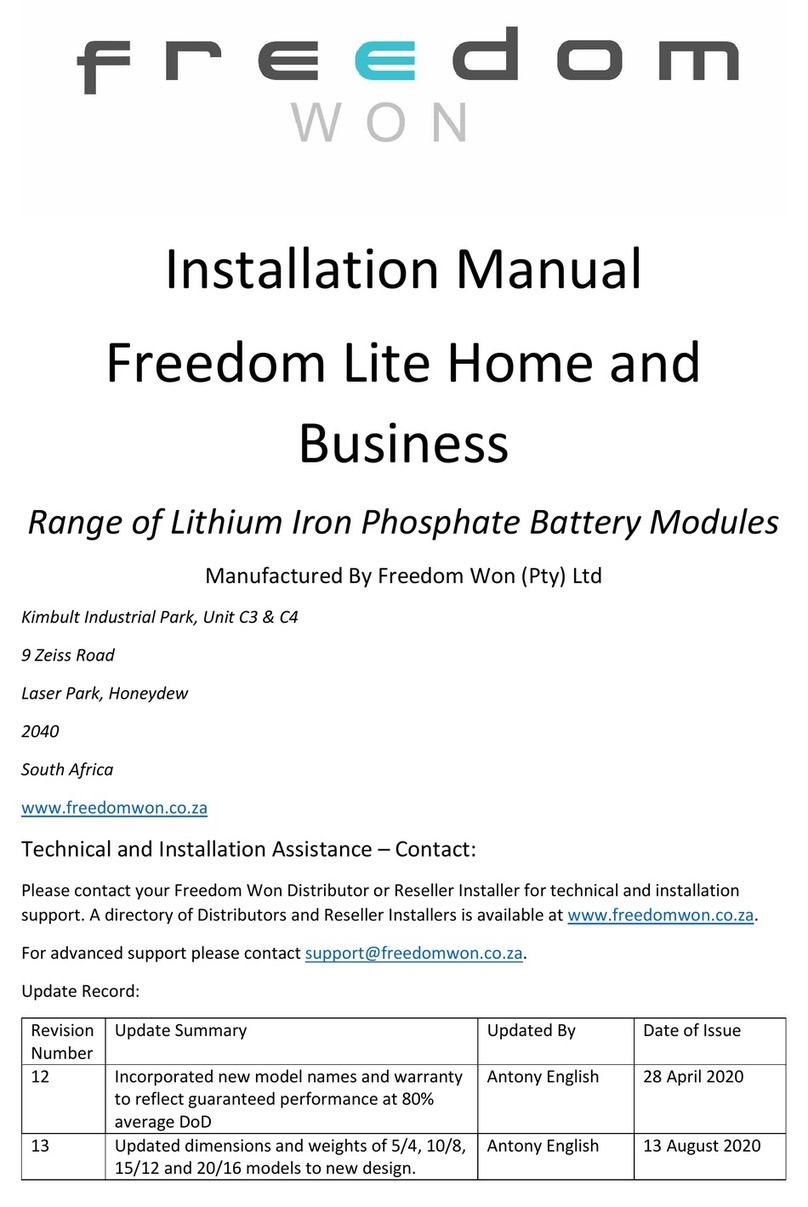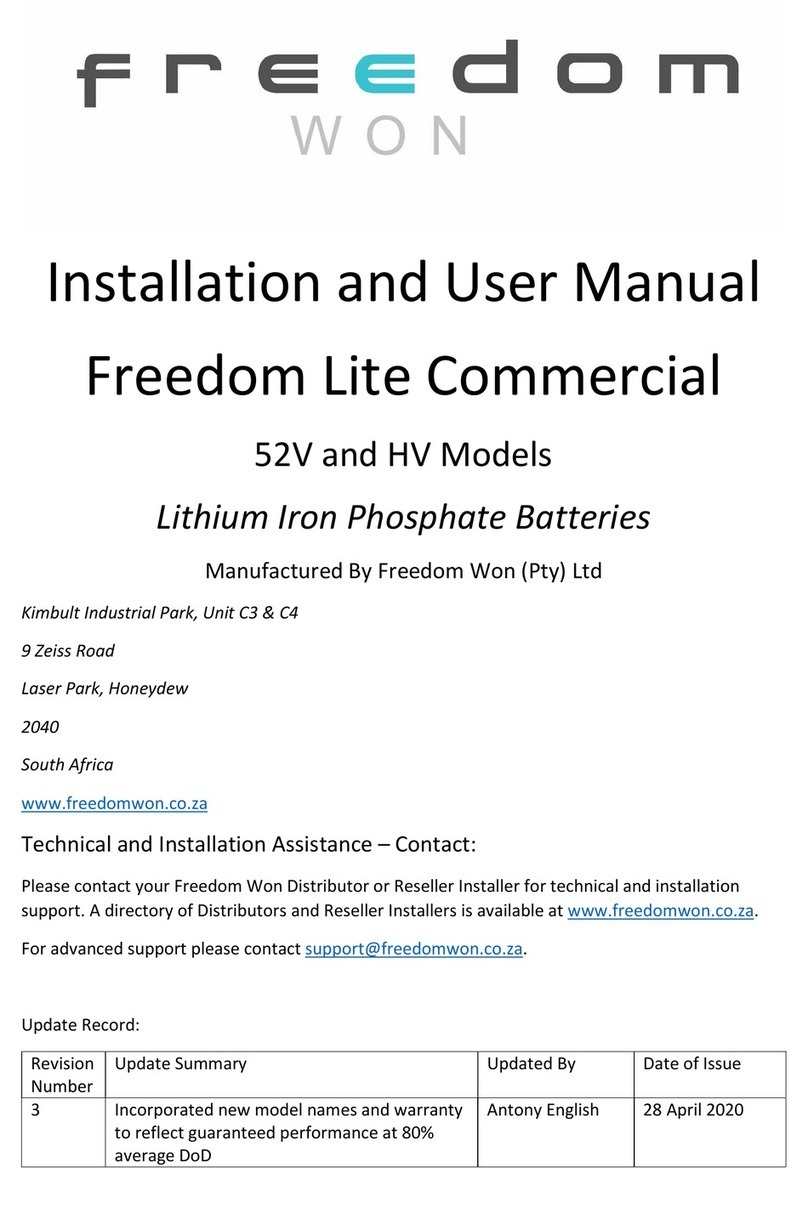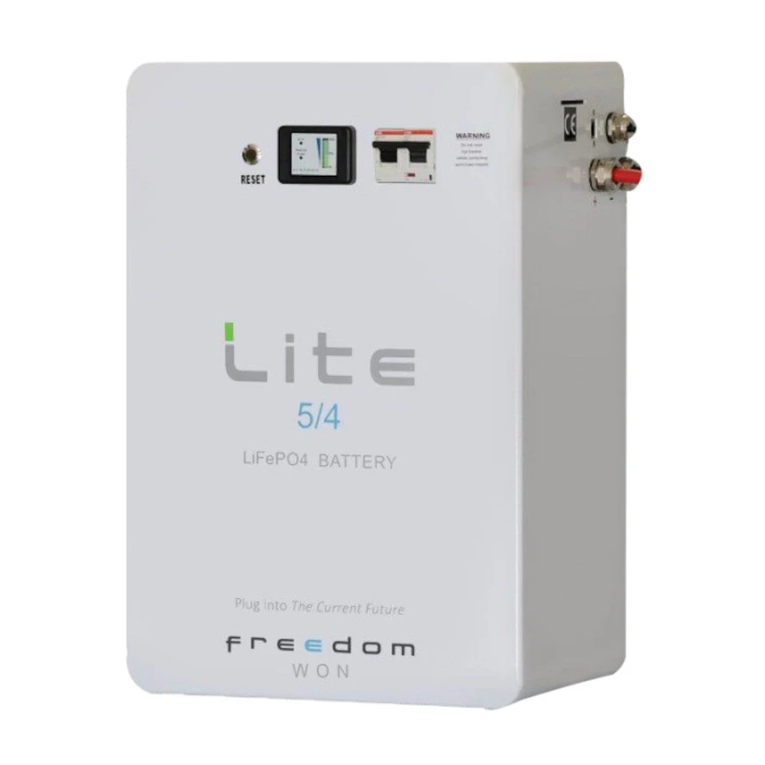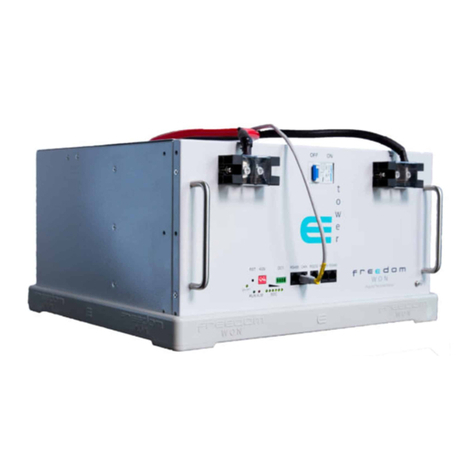
Freedom Lite Home and Business HV Installation Manual Revision 1
P a g e 8 | 25
3. DC Bus Design Notes
The Lite range includes an integrated battery DC breaker/isolator that breaks the positive
cable continuity inside the battery. This breaker, on all Home and Business models, is rated
for a 36kA fault (short circuit) current. The system therefore does not require another DC
isolator or breaker except where required in relation to conformance with the Clean Energy
Council of Australia battery design Best Practice Guide, which states that, should the
internal battery isolator not offer isolation of BOTH the positive and negative terminals of
the battery, an external isolator is required that can isolate both the positive and negative
cables/terminals of the battery.
The approximate short circuit current values of each battery model are provided in the table
below:
Table 3.1 Short Circuit Current for Lite Home and Business Models
Freedom Lite Home
15/12HV
Home
20/16HV
Home
30/24HV
[30/24HV+]
Business
40/32HV
[40/32HV+]
Business
60/48HV
[60/48HV+]
Business
80/64HV
Short Circuit Current [A] 3100 3600 4700 5100 5800 6200
The external isolating device required for installations in Australia should be designed to
withstand these fault levels (short circuit currents).
4. Transport, Handling and Mounting
The Freedom Lite units are packaged in protective layering and fastened into a wooden
crate with pallet type feet, which allow lifting with a forklift or a pallet jack. The 15/11HV
and 20/14HV models may be manually handled by four people but are best handled by a
pallet jack or forklift if available. The 30/21HV, 40/28HV, 60/42HV and 80/56HV models
must be handled with care by a forklift or pallet jack of the required lifting capacity rating.
If it is necessary to transport the larger units (typically 40/28 and larger) up or down
multiple stairs in order to get them to the point of installation in the premises it may be
preferable to deliver the unit with the lithium cells separate and then Freedom Won will fit
them into the unit on site. This must be arranged with Freedom Won at the time of order
placement and will attract a nominal fee for labour plus transport and accommodation
where applicable. This service is not available in all countries. Please enquire with Freedom
Won Sales.
The “Home” series is designed for wall mounting in order to preserve room and floor space
and offer a convenient obstruction free and aesthetically pleasing solution. Each model is
fitted to the wall using two Rawl Bolts. The Rawl Bolts are inserted into correct diameter
pre-drilled holes in the wall. The bolts must first be tightened substantially so that the
internals of the Rawl Bolt have gripped tightly into the wall, and then the bolt must be
turned out slightly with the head protruding so that about 5mm of the bolt shank is

































